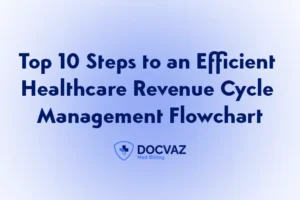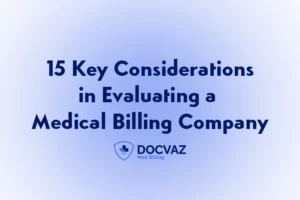Hospital operating margins slid to –1.3 % in Q1 2025 while denial rates crept above 12 %.¹ Advanced analytics—once optional—now determines whether organizations stay solvent. Yet hiring data scientists, buying AI tools, and maintaining compliance in-house can exceed $1 million annually. That’s why a record number of health systems are shifting to outsourced Revenue-Cycle Analytics (RCA) partners who deliver turnkey platforms, certified talent, and benchmark insights on day one—at a variable cost tied to results.
The Economics Driving Outsourcing
| Pressure Point (2025) | Impact on Finance | Analytics Need |
|---|---|---|
| Labor inflation + clinician shortages | Contract labor up 19 % YoY | Productivity & staffing ROI analysis |
| Denials up 44 % since 2020 | $7.2 B lost revenue (US) | Predictive denial prevention |
| Value-based payments at 41 % of revenue | New quality & cost metrics | Outcomes-to-payment correlation dashboards |
| Cybersecurity & HIPAA fines | Avg. breach cost $11 M | SOC-2 / HITRUST hosting & audit trails |
¹ Kaufman Hall National Hospital Flash Report, Jan 2025
RCA Layers and Why They’re Hard to Build Internally
| Analytics Layer | Purpose | Typical Skillset Needed |
|---|---|---|
| Descriptive | What happened? A/R aging, clean claim | Report writers, SQL analysts |
| Diagnostic | Why did it happen? Root-cause denial | BI engineers, certified coders |
| Predictive | What will happen? Denial probability | Data scientists, ML engineers |
| Prescriptive | What should we do? Action queues | RPA developers, process-improvement experts |
Talent shortage: 67 % of hospitals report “critical” gaps in data science roles (CHIME, 2024). Recruiting, training, and retaining these specialists competes directly with clinical hiring priorities.
Ten High-Value Problems Outsourcing Solves
- Surging Denials – AI models flag claims 95 % likely to deny before submission.
- Manual Charge-Capture Gaps – Computer-vision bots reconcile EMR notes to charges, recouping 1–3 % of net revenue.
- Disparate Data Silos – Cloud data lakes ingest HL7, FHIR, 835/837, and ERP feeds nightly for a “single source of truth.”
- Compliance Burden – Vendors embed weekly CPT/HCPCS, OCE, No Surprises, and price-transparency rule updates.
- Capital Expense – Subscription converts seven-figure CapEx (software + servers) into OpEx.
- Limited Benchmarking – Peer data from 500+ hospitals spots outlier denial codes and payer outliers.
- Slow A/R Follow-up – RPA triggers status checks every 24 h, cutting Days in A/R by 15–30 days.
- Audit Anxiety – SOC-2, HITRUST, and audit-ready logs slash external-audit prep time by 60 %.
- M&A Integration – Vendors normalize multi-EMR data within weeks, not years.
- Executive Visibility – Self-service dashboards push KPIs to CFO, CMO, and service-line leaders in real time.
Quantifying ROI: Before-and-After Benchmarks
Study of 78 hospitals (2023-2024 outsource adopters):
| KPI | Baseline | 12 mos Post-Outsource | Δ |
|---|---|---|---|
| Clean-Claim Rate | 86 % | 95 % | +9 pp |
| Initial Denial Rate | 11.2 % | 6.3 % | –44 % |
| Net Patient Revenue | — | — | +5.6 % |
| Cost-to-Collect (¢ per $1) | 4.1 ¢ | 3.2 ¢ | –22 % |
| Days Cash on Hand | 68 | 82 | +14 |
Source: Health Catalyst Consulting, Dec 2024.
Build-vs-Buy Cost Calculator (Mid-Size 300-Bed Hospital)
| Expense Category | In-House | Outsourced (3 bp of NPSR) |
|---|---|---|
| AI analytics platform & licenses | $350 k | — |
| Data-warehouse hosting & maintenance | $90 k | — |
| 2 Data Engineers + 1 Data Scientist (salary+burden) | $540 k | — |
| Compliance rule-set subscription | $40 k | — |
| Upgrades, patches, security audits | $60 k | — |
| Subtotal | $1.08 M | — |
| Outsource subscription (on $240 M NPSR) | — | $720 k |
| Annual Net Savings | — | $360 k |
Intangible gains (faster cash, fewer denials) magnify value by ≥5 ×.
Compliance & Risk Mitigation Advantages
- Built-in HIPAA, SOC-2 Type II, HITRUST controls.
- Automated No Surprises Act good-faith estimate reconciliation.
- Audit-grade logs track every code edit, denial appeal, and user action.
- Continuous monitoring for fraud-waste-abuse outliers.
Must-Have Features in a 2025 RCA Partner
| Feature | Why It Matters |
|---|---|
| Real-time predictive denial engine | Prevents revenue loss before claim submission |
| Open APIs / FHIR compatibility | Seamless Epic, Cerner, Meditech, athenaIDX integration |
| Peer benchmarking (≥300 hospitals) | Uncovers outlier payers, departments, service lines |
| Performance-based SLAs | Guarantees clean-claim ≥94 %, denial rate ≤6 % |
| Dedicated client-success manager | Single point for escalations and continuous improvement |
| On-shore coding/compliance team | Ensures HIPAA, reduces offshore data-transfer risk |
90-Day Go-Live Roadmap
| Phase | Day 0–15 | Day 15–35 | Day 35–55 | Day 55–90 |
|---|---|---|---|---|
| Focus | Discovery | Data Ingest | Validation | Full Production |
| Key Tasks | Workflow mapping, KPI targets | HL7/FHIR feeds, nightly 835/837 SFTP | Parallel run vs. legacy reports | Dashboards live, RPA edits live |
| Hospital Role | Provide SMEs and data dictionaries | Open EMR & clearinghouse APIs | Approve reconciliation | Staff training, governance |
Change-Management Checklist
- Nominate “RCA Champions” in HIM, Finance, IT.
- Host lunch-and-learn sessions to dispel AI job-displacement fears.
- Publicize quick wins—e.g., top three denial codes fixed in month one.
- Implement weekly huddles to assign and track RCA-generated action items.
- Align performance incentives (bonus metrics) with RCA KPIs.
Emerging RCA Trends to Watch (2025-2027)
| Trend | Practical Impact |
|---|---|
| Generative-AI denial-appeal drafting | 60 % faster appeal turnaround |
| Ambient financial voice capture | Hands-free POS estimates feed analytics automatically |
| FHIR bulk-data mandates | Easier multi-facility analytics, smoother M&A roll-ups |
| Price-Transparency star ratings | Public dashboards pressure hospitals to perfect RCA KPIs |
Frequently Asked Questions
Q1: Will we lose control of our data?
No. Contracts stipulate that all data remains hospital-owned; vendors provide read-only API access and nightly mirrored backups.
Q2: How soon will ROI appear?
Most hospitals realize measurable cash-flow improvements within 90–120 days of go-live, with full ROI inside 12 months.
Q3: What about rural or critical-access facilities?
Vendors offer tiered pricing and shared-service models; smaller hospitals benefit most because they can’t staff data-science roles in-house.
Conclusion
Hospitals that outsource revenue-cycle analytics with DocVaz gain best-in-class technology, specialized talent, and peer benchmarks without the capital drain of an in-house program. In an era where every percentage point of margin matters, RCA outsourcing is no longer a tactical cost-cut—it’s a strategic imperative for sustainable growth and superior patient care.




